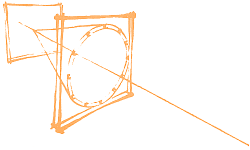Orateur
Dr
Vladislav Matoušek
(Institute of Physics, Slovak Academy of Sciences)
Description
With the advancement of position sensitive low energy photon detectors with high quantum efficiency a ring imaging Cherenkov detector (RICH) becomes employed in increasing number of experiments. Trajectories of the particles with the momentum above Cherenkov photon emission threshold are in the RICH photon detector represented by rings. However, these rings are far from being ideal. Recognition of rings is therefore a serious problem, especially when fast decision is required, as it is usually the case when information from RICH detector is used in trigger.
There exist several algorithms for the recognition of Cherenkov rings in experimental data. They are based e.g. on triangulation method, on a Metropolis-Hastings Markov chain Monte Carlo sampling, etc. Other pattern recognition techniques are used as well.
In the talk we would like to present a new, alternative pattern recognition algorithm applied for determination of rings in two-dimensional spectra from RICH detectors. The method is based on boosted Gold deconvolution algorithm. This algorithm makes it possible to concentrate the contents of one ring into one point located in its centre. This allows us to automatically recognize rings in two-dimensional spectra. By choosing suitable input parameters for the deconvolution one can obtain an efficient tool for identification of rings in two-dimensional spectra.
We will present examples of various properties of the proposed algorithm, e.g.: influence of the number of iterations, number of repetitions and boosting coefficient on the efficiency of the circle identification, behavior of deconvolution algorithm for noisy input data, resolution capabilities of the proposed method, robustness of the deconvolution method to the changes in radius and shape of the rings, the ability to identify the rings in experimental spectra.
| Please indicate "poster" or "plenary" session. Final decision will be made by session coordinators. | plenary |
|---|
Auteur
Dr
Vladislav Matoušek
(Institute of Physics, Slovak Academy of Sciences)
Co-auteur
Prof.
Miroslav Morháč
(Institute of Physics, Slovak Academy of Sciences)

